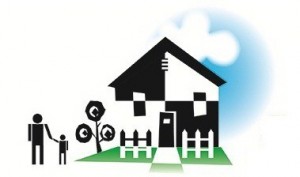“Workforce housing” has become a popular term among housing advocates. Its definition varies, but for our purposes, it simply means affordable housing that’s fairly close to the workplaces of lower-and middle-income people.
Now, the ideal is that all the people who make a town’s economy run — the cashiers and the teachers, the home health-care aides and the police officers, the waitresses and the accountants, the secretaries and the tradespeople, from carpenters and plumbers to electricians — should all be able to live in town, if they want. That’s a form of population diversity — in skill sets, in housing options — that the Fair Housing Project wants to encourage: affordable housing for people of mixed incomes near their work sites.
Well then, one might well wonder how the job locations and the affordable housing units in Vermont match up … or don’t, town by town.
There’s no easy way to get at this, but here’s a proxy approach:
Look at municipalities that are employment centers and see how many units of subsidized housing they have.
Of course, “subsidized housing” typically refers to housing for people earning up to 80 percent of the median income, so it’s not the same as housing that accommodates a wide-ranging workforce of middle and above average incomes. But at least we can get an idea of which employment centers are more or less accommodating of lower-paid workers — the cashiers and personal care aides, for example, the two occupations with the most numerous openings in Vermont, according to the Department of Labor. We’ll assume that full-time cashiers and personal care aides qualify for subsidized housing. (Cashiers’ median hourly wage in Vermont last year was $9.73; personal care aides’, $10.99. By contrast, Vermont’s “housing wage” — the hourly rate needed to afford an average apartment without paying more than 30 percent of income– was $19.36.)
As for “employment centers” there were more than 80 Vermont municipalities that offered 500 jobs or more in 2014, according to Department of Labor statistics.
Of those, more than 30 had 2,000 jobs or more. Arbitrarily, we’ll call those the “major employment centers.”
To find out how many subsidized housing units each municipality has, we simply go to the Directory of Affordable Housing on the Housing Data website , pull up all the site-specific units for each town, and add them up.
With these two figures for each municipality — number of jobs and number of subsidized (affordable) housing units — we can derive a seat-of-the-pants workforce housing index: How many subsidized units for each 100 jobs. The higher the index, the more “workforce housing” that community provides.
Well, it turns out that all but one of Vermont’s major employment centers have a workforce housing index under 10 – that is, they each have fewer than 10 affordable housing units for every 100 workers.
The exception is Winooski, where the index is a whopping 24. (The city occupies a mere square mile, much of which is included in the aerial photo above.) Winooski had 2,799 jobs in 2014 and 687 subsidized housing units — the friendliest affordability ratio in Vermont by far.
Which major employment centers in Vermont had the fewest subsidized units? Stay tuned.

